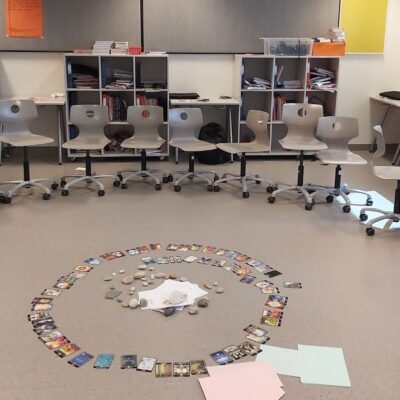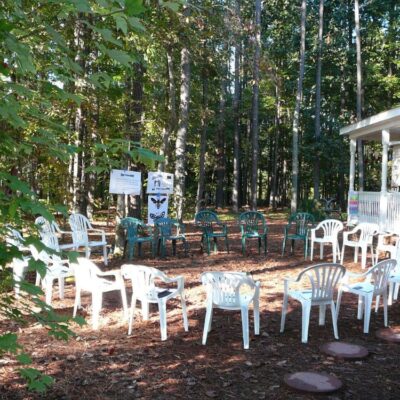
Distance schooling started here recently. Like communities around the world, we had been isolated at home for weeks. Our school district implemented a plan to get kids learning again. It took exactly 2 days before my daughter came to me and asked what would happen if she just decided not to do the work. Could she drop out of distance school? The answer was no. But it came with a question. “What is the problem that makes you want to stop? You like school!”
Her answer proved a valuable lesson for leaders everywhere. I hope you will pay attention to it and how it might relate to your own organization. She (and I) might offer some valuable tips for what comes next in your work.
The challenge had nothing to do with school itself
I’ll spare you the details of the meltdown that ensued (and her the embarrassment of being reminded about it in years to come). Her reasons were familiar to me:
- Working in isolation at home when she was used to spending most of her day in group projects was lonely. She lost the benefit of collaboration.
- Not having classmates that she could just lean over and talk to at the next desk made thinking about her best approach too hard. She lost the benefit of collective wisdom.
- There was an assumption distance learning was going to be different than it actually was. She had made assumptions to fill in the gaps of what she had been told about distance learning and was shocked when they proved to be false.
Common challenges for leaders
Everything she reported about her experience described common challenges leaders face in organizations every day. How do you best benefit from collaboration and tap into collective wisdom? How do you clarify assumptions so that people are putting their energy into what is rather than what they wish it would be?
An overlooked challenge for leaders
There was one more challenge in this situation that she couldn’t name. But I knew what it was from years of experience in working with organizations. The leaders of her organization (in this case, the administrators, teachers, and school staff) had weeks of working together privately on this project. They had each other to talk with about their grief, share their struggles, and to be planning with each other for what came next. Teachers only began communicating with their students once there was a clear plan in place. They expected immediate buy-in to the plan and business as usual, albeit from home instead of school.
With barely an acknowledgment that things were different now, both in the world in the midst of a scary pandemic and that they were doing school at home instead of the classroom, assignments were handed out with an expectation to just get started with the work expected of them. The students were given no school time to grieve together or to begin making collective sense of their new normal.
This is not much different than the way organizational projects often roll out. A small team works on the development plan and then expects everyone to jump in and get started when the implementation plan is rolled out. Then there is shock or bewilderment when what happens first is resistance or confusion amongst the employees tasked with doing the work.
A simple solution
If I had it to recommend to the school in their planning time, I would have offered them the same suggestions I am about to offer you.
Make time for stories
Remember how it has been for you as the leader with your leadership team in the early stages of adapting to these changes. How frequently your conversations drifted away from the topic at hand to the latest numbers being reported or the newest restrictions being implemented. Your conversations might be more focused now that you have had weeks of adapting together. Even though your employees have had time to adapt at home, consider how they might need time to adapt at work too. Where are you building in intentional conversations and storytelling to allow for people to adapt? Not just now as we continually adapt to the current restrictions to non-essential business. But also when these restrictions begin to lift and people start to return to the office. It’s not going to be “back to normal.” It is going to be “forward to the new normal.”
Collaborative planning
Getting ready for moving “forward to the new normal” will work better as a collaborative approach. Bring people together when they have had a chance to tell their stories and adapt to life and work as it is now so that they can explore together, plan together, and find ways of working together to achieve business goals within this new framework. Your teams have within them the collective wisdom to get the job done and to do it well, in whatever the new situation will be like. As a leader, it is your job to create the container in which they can do it.
How Are You Going Back?
As a leader, how have you been preparing to support the people in your organization to be ready for what comes next?
Photo by Annie Spratt on Unsplash










Doris Gottlieb
Thank you for this post, it touches on so many issues that I am experiencing both personally and in organizations.
It is very valuable,
Doris
Eric Kapono
This was spot on with my daughter’s experience and the school’s approach. It was a bumpy couple of months, but her drive-through graduation on Saturday, now that I look back at it, was a clear “letting go” for her. I think acceptance was maybe just a week before graduation. Now I think she’s using her two feet for a bit, more butterfly than bumble bee, towards a reframing of her college experience.
I think I’ll print the cycle out and have a reflection with her later today.
Thanks!
~Eric